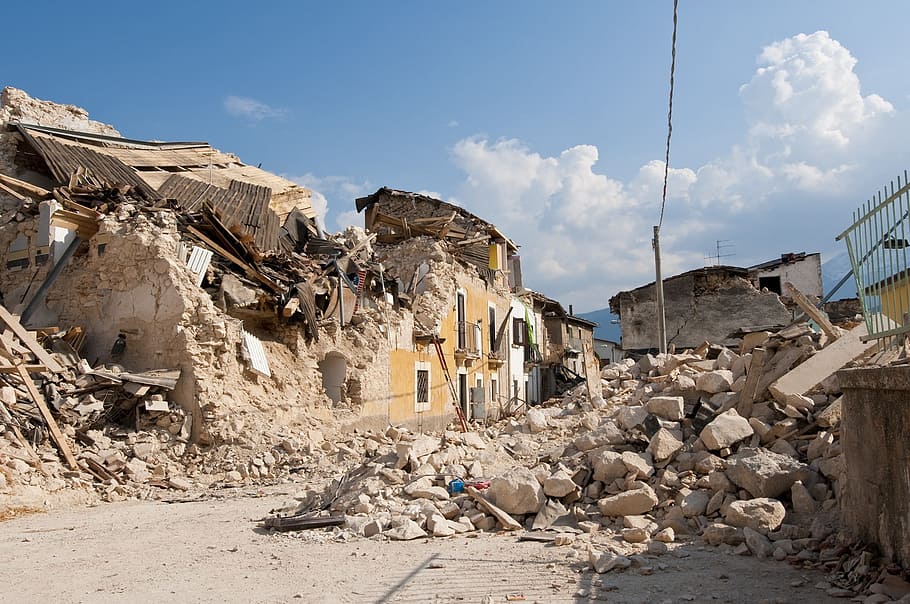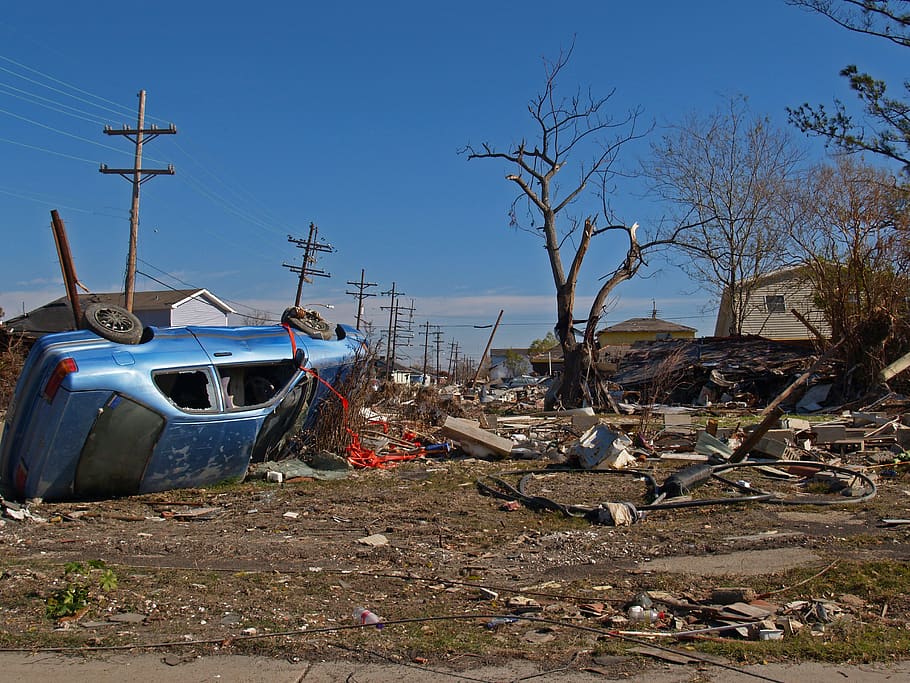キャプティブ 2021.02.14
CA24 東日本大震災の余震 Aftershocks of the Great East Japan Earthquake
昨日、2021年2月13日午後11時7分、太平洋プレート内、福島県沖の深さ55キロを震源として、宮城県と福島県で最大震度6強を観測したマグニチュード7.3の地震が起きた。気象庁は、本日14日未明に開いた記者会見で、「2011年3月11日の東日本大震災を引き起こした地震の余震と考えられる」と発表、「今後1週間程度、同規模の地震に注意してほしい」と伝えた。
震度6強は、宮城県蔵王町と福島県国見町、相馬市、新地町で、またその揺れは北海道から中国地方までの広範囲で観測され、東日本大震災の際、東京新宿の高層ビル群を大きく長時間揺らした「長周期地震動」も、最大の「階級4」を福島県中通りで観測した。
各地で、火災や落石、電線の破断といったことが相次ぎ、大規模な停電も東北地方から関東地方にかけて一時的に発生した。東北自動車道、常磐自動車道などが通行止めになり、常磐自動車道では、路面の隆起、また土砂崩れが起きた。政府は、昨日午後11時過ぎに首相官邸の危機管理センターに官邸対策室を設置、被害状況の把握を急ぎ、本日未明、首相官邸で記者会見をおこない、「地震による津波の可能性は若干の海面変動がある可能性があるが、被害の心配はない」と述べた、
気象庁のホームページによると、「東北沖を震源とする最大震度6強の地震は2011年4月7日以来、約10年ぶり」ということである。

1.東日本大震災の余震
昨年、2020年2月27日、「RM 19-『桜えびの不漁』が意味するもの The Meaning of “Poor catch of Sakura (Cherry ) Shrimp”」と題する以下のコラム記事を本コラムに投稿した。
4.南海トラフ巨大地震
2019年12月、関東地方で立て続けに大きな地震が起きた。そして本年、2020年1月3日にも、「千葉県東方沖を震源とする最大震度4、震源の深さは約30km、マグニチュード(M)は5.9と推定される」地震が起きた。政府の「地震調査委員会」は、今後30年以内に「南海トラフ地震」の発生する可能性は70~80%と既に発表している。
国立研究開発法人海洋研究開発機構(JAMSTEC:ジャムステック)は、「アウターライズ地震に備える」と題した同機構のWEBサイトで、次のように言っている。
「2011年の東北沖地震のようなプレート境界型巨大地震に続いて、沈み込む前の海洋プレート(アウターライズ)内で正断層型巨大地震が発生することが、これまでの地震観測により指摘されています。この内、プレート境界型地震については、津波浸水予測が進められており、現実的な想定断層によるシナリオ津波と地震時の津波波形を比較して即時的に予測するシステムが構築なされています。しかし、アウターライズ地震に関しては、震源断層の情報が無いために、想定すべきシナリオ地震が設定できていません」と。
大地震発生後、数年~10年の期間に、大地震後プレート間の摩擦が減って、「Aプレートの先端がBプレートの下に沈み込む速度が速くなりすぎて、Aプレートが引きちぎれてしまうように、連鎖的に発生する地震」、先ほど記した869年の貞観地震、878年の元慶地震、887年の仁和地震のような地震を「アウターライズ地震」と言うが、そのため2011年の巨大地震、東日本大震災のアウターライズ地震の発生が強く懸念されているのである。
また、同様に、2020年5月4日、「RM33-『ソーラーパネル』の備え Preparing for solar panels」と題して以下を本コラムに投稿した。
筆者はリスクマネジメントに長年携わってきた。その経験から、今般の新型コロナ・ウイルスの感染拡大の先に存在する日本にとっての最大級のリスク、「南海トラフ大地震」、「首都圏直下地震」、これらのリスクに対する認識をどうしても新たにせざるを得ない心境に駆られた。「不測の事態は、更なる不測の事態を呼ぶ」というリスク認識をこれまでの長年のリスクマネジメント業務を通して学んできたからである。
万が一にも巨大地震が発生した場合、特にお客さまとのコミュニケーション手段であるメール等の使用が困難にならないように「通常電源の確保」のため、最高峰のソーラーバッテリーとソーラーパネルを調達、「避難所より凄い設備ですね」と言われるほど強固な備えにした。何が起きようとお客さまへの伝達責任があると考えているからである。
一人が、一企業が、それがどれほど大きなものであっても「直面するリスク」だけではなく、「内部(内包する)リスク」、「外部(遭遇する)リスク」を具に検証して「直面していないがリスクの存在が考えられる事項」に対応する必要があるのではないかと考えている。それこそが企業にとっての「本当のコーポレートガバナンス」であると考えているからである。
2.マグニチュード
地震が起きた際、気象庁から発表されるマグニチュードは小数第1位まで発表される。つまり、マグニチュード(M)7.0と発表された場合は、「M6.95〜M7.05」の範囲内にあると考えられる。その結果、マグニチュード(M)が同じ地震であっても最大で約1.4倍の開きがあることが理解できる。また、地震のエネルギーは、地中、地表面を拡散されていくため地震のエネルギーを正確に測る方法はないことも解る。
日本語の「マグニチュード」を英文に翻訳する場合、例えば、M7.4を翻訳する場合、その英文は「magnitude 7.4 on the Richter scale」となるが、このマグニチュードとは、その後半部分に名前を残す、米国の地震学者チャールズ・リヒターが考案、1935年に発表した地震のエネルギー量を表す指標値のことである。
では、このマグニチュード(M)の規模は、数字が増えることでどれほどのエネルギー量が増えていくのであろうか。マグニチュード(M)7とマグニチュード(M)8の差は「1」であるが、マグニチュードの値の増加は測定された振幅の10倍の増加を示した数値とされている。つまり、「マグニチュードが1増えると、10√10 =約30倍、2増えると(10√10)2 = 約1000倍そのエネルギー量は増える」のである。
今回の東日本大震災のアウターライズ地震(余震)の規模は、マグニチュード(M)7.3であったが、日本周辺での観測史上最大の地震であった東日本大震災のマグニチュード(M)は9.0であり、そのエネルギー量の差は数百倍あったということが理解されるであろう。

今回のまとめ
本コラムに「南海トラフ巨大地震」のことを何度か記してきたが、昨日の地震は、東日本大震災から10年を前にして、「大地震への備え」を求める、警告する事象ではないだろうか。
東日本大震災の2日前、2011年3月9日、マグニチュード(M)7.3の地震が三陸沖を震源として発生した、「東日本大震災大震災の前震」と考えられる、この「三陸沖地震」のことは、その後の東日本大震災の衝撃があまりにも大きく、人々の記憶には残っていないかもしれないが、当時、日本の伝統ある保険会社と日本最大の共済団体への経営コンサルティングに従事していた筆者は、その経営コンサルティング先が東北地方では大きなビジネスを有していたため、「更に大きな地震への備えが必要」と強く対応を求めたこと、また、残念ながら、その懸念が2日後的中してしまい、経営コンサルティング先から「一昨日、羽谷さんに言われましたね」と東日本大震災大震災の余震が続くなか、電話をいただいたことを良く憶えている。
災害が起きる前に防ぐことを「防災」と呼ぶ。2011年の東日本大震災、また政府、気象庁から度重なる「南海トラフ巨大地震」への警告、それらがあっても、その「備え」をしている企業、団体はどれほどの数あるのだろうか。
「地震保険は付けています」と伺い、「では、拝見します」と保険証券を拝見すると、「本来付けるべき保険金額(補償額)」に比べて非常に低い数値しか付いていないので、「これで大丈夫ですか?」と伺うと、「いやあ、地震保険は高くて」と。
また、「物的損害(PD: Property Damage)のみが補償される内容」なので、「『物的損害の補償』も重要ですが、それ以上に心配なのは、津波の内陸部への浸潤によって、インフラが壊滅的なダメージを受け、事業の継続が困難になった場合への補償、『事業中断に対する補償(BI: Business Interruption)』をされておかれた方が良いでしょう」と申し上げることも多い。
いまこそ、キャプティブの設立を視野に入れた本格的なリスクマネジメントを実行して、「明日への備え」を万全にする時ではないだろうか。昨日の地震がそのことを求めているのではないだろうか。
English Translation
Captive 24ーAftershocks of the Great East Japan Earthquake
Yesterday, 13 February 2021, at 11:07 pm, an earthquake measuring 7.3 on the Richter scale, 55 km deep off the coast of Fukushima Prefecture, within the Pacific Plate, occurred in Miyagi and Fukushima Prefectures with a maximum intensity of 6.0 strong on the Japanese scale. The Japan Meteorological Agency (JMA) announced at a press conference held earlier today, February 14, that the quake is considered to be an aftershock of the earthquake that caused the Great East Japan Earthquake on March 11, 2011, and asked people to be careful of earthquakes of the same magnitude for the next week or so.
The quake was felt across a wide area, from Hokkaido to the Chugoku region, and the largest of the “long-period tremors,” which shook the skyscrapers of Shinjuku in Tokyo for a long time at the Great East Japan Earthquake , was recorded in Nakadori, Fukushima Prefecture.
Fires, falling rocks, and broken power lines were reported in many areas, and large scale power outages occurred temporarily in the Tohoku and Kanto regions. The Tohoku Expressway and Joban Expressway were temporarily closed to traffic, with the Joban Expressway experiencing road rises and landslides. At dawn today, the government held a press conference at the Prime Minister’s official residence, saying that there was no concern about damage, although there was a possibility of a tsunami caused by the quake and a slight change in sea level.
According to the Japan Meteorological Agency’s website, this is “the first time in about 10 years since April 7, 2011 that an earthquake with a maximum seismic intensity of 6.0 strong on the Richter scale has struck off the coast of Tohoku”.
1. Aftershocks of the Great East Japan Earthquake
Last year, on 27 February 2020, I posted the following column article titled “RM 19 – The Meaning of ’Poor catch of Sakura (Cherry ) Shrimp’” in this column.
4. The Nankai Trough Giant Earthquake
In December 2019, a series of major earthquakes hit the Kanto region. And this year, on January 3, 2020, another earthquake “with a maximum intensity of 4 on the Japanese scale, estimated to be magnitude 5.9 on the Richter scale, with an epicenter off the east coast of Chiba Prefecture and an epicenter depth of about 30 km” occurred in the Kanto region. The government’s Earthquake Research Committee has already announced that there is a 70-80% chance of a Nankai Trough earthquake occurring within the next 30 years.
The Japan Agency for Marine-Earth Science and Technology (JAMSTEC) says on its Web site titled “Preparing for an Outer-Rise Earthquake”.
“Past seismic observations have indicated that major earthquakes of the normal fault type occur within the oceanic plate (outer-rise) prior to subduction, following major earthquakes of the plate boundary type, such as the 2011 Tohoku earthquake. A tsunami inundation prediction system has been developed for the outer-rise earthquakes, which is based on the comparison of realistic scenario tsunamis with earthquake waveforms. However, we have not been able to create a scenario earthquake for an outer-rise earthquake due to the lack of information on the earthquake’s epicenter fault.”
During a period of several to 10 years after a major earthquake, the friction between the plates decreases and “the tip of Plate A sinks beneath Plate B too fast, causing Plate A to tear apart, in a chain reaction,” as in the aforementioned 869 Jogan earthquake, 878 Gangyou earthquake, 887 Earthquakes like the Ninna earthquake are called “outer-rise earthquakes,” which is why there is strong concern about the occurrence of a major earthquake in 2011, the Great East Japan Earthquake Outer-Rise Earthquake.
Similarly, on 4 May 2020, I posted the following in this column under the title “RM33 – Preparing for ‘solar panels'”.
The author has been involved in risk management for many years and my experience has compelled me to renew my awareness of the greatest risks to Japan beyond the spread of the new coronavirus (covid-19): the Nankai Trough earthquake and the earthquake directly beneath the Tokyo metropolitan area. This is because I have learnt over many years of risk management that “unforeseen circumstances lead to further unforeseen circumstances”.
In the unlikely event of a major earthquake, we have procured the best solar batteries and solar panels to ensure that we have a normal power supply, especially to communicate with our customers via email. This is because we believe that no matter what happens, we have a responsibility to communicate to our customers.
We believe that each person and each company, no matter how big the risk, needs to examine not only the risks it faces, but also the internal and external risks it may encounter, and to deal with the risks it does not face, but which may exist. We believe that this is what “real corporate governance” is all about.
2. Magnitude
When an earthquake occurs, the Japan Meteorological Agency announces the magnitude to the first decimal place. In other words, a magnitude (M) of 7.0 is considered to be in the range of M6.95 to M7.05. As a result, it can be understood that there is a maximum gap of about 1.4 times between earthquakes of the same magnitude (M). It is also understood that there is no precise way to measure the energy of an earthquake, as it diffuses through the ground and over the surface.
When translating the Japanese word “magnitude” into English, for example M7.4, the English translation is “magnitude 7.4 on the Richter scale”. The Richter scale was devised by Charles Richter, an American seismologist, and published in 1935 to measure the energy of earthquakes.
So how much energy does this magnitude (M) scale increase as the number increases? The difference between a magnitude (M) 7 and a magnitude (M) 8 is “1”, but an increase in the magnitude value is considered to be a number that represents a tenfold increase in the measured amplitude. In other words, “an increase of one magnitude increases the amount of energy by 10√10 = about 30 times, and an increase of two increases the amount of energy by (10√10)2 = about 1000 times”.
The magnitude of the aftershock of the Great East Japan Earthquake was 7.3 on the Richter scale, but the magnitude of the Great East Japan Earthquake, which was the largest earthquake ever recorded in the vicinity of Japan, was 9.0 on the Richter scale, which means that the difference in energy content was several hundred times greater.
Summary of this article
I have written about the “Nankai Trough Mega Earthquake” several times in this column, but yesterday’s earthquake may be a kind of warning to us all to be prepared for a major earthquake, 10 years before the Great East Japan Earthquake.
On 9 March 2011, two days before the Great East Japan Earthquake, a magnitude 7.3 earthquake struck off the coast of Sanriku, which is considered to be a “prelude to the Great East Japan Earthquake”.
However, as a management consultant to a traditional Japanese insurance company and the Japan’s largest mutual aid organisation, which at the time had significant business in the Tohoku region, I strongly urged them to be prepared for an even bigger quake and, unfortunately, my concerns came true two days later.
I remember very well the phone call I received from a management consulting client who said, “Mr Hatani told us about this the day before yesterday,” as the aftershocks of the Great East Japan Earthquake continued.
Preventing disasters before they happen is called “disaster prevention”. After the Great East Japan Earthquake in 2011, and the repeated warnings from the government and the Japan Meteorological Agency about a huge earthquake in the Nankai Trough, I wonder how many companies and organisations are preparing for such a disaster.
In an online meeting with a client, I asked him if he had earthquake insurance, and when I looked at his insurance policy, he said, “Well, let me see”. When I looked at the policy, I found that it was very low compared to the amount of insurance (coverage) that I should have had, so I asked him if this was OK. They replied, “No, earthquake insurance is too expensive”.
As the policy only covers PD (Property Damage), we often advise that, while ”Property Damage” is important, it is more important to have ”Business Interruption”(BI) coverage, which covers you in the event that the inland infiltration of the tsunami causes catastrophic damage to your infrastructure and makes it difficult for you to continue your business. It would be better to have a Business Interruption (BI) plan in place.
Now is the time to implement full-scale risk management, with a view to setting up a captive, to ensure that we are ‘ready for tomorrow’. Yesterday’s earthquake may have prompted us to do just that.

